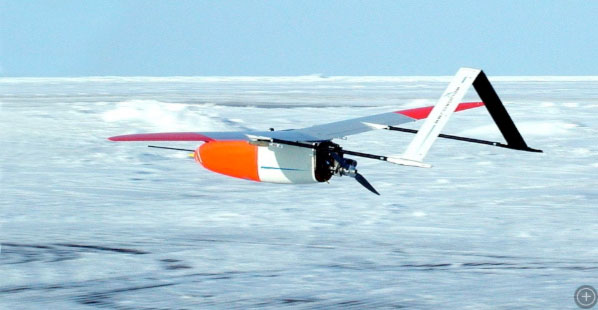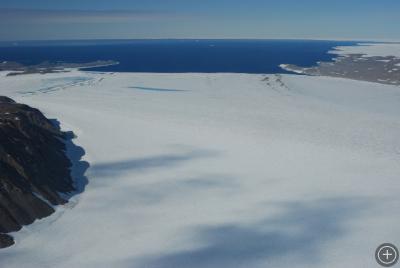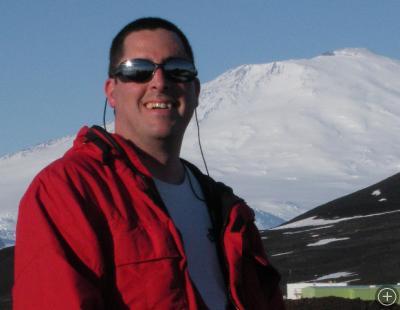
Studying Air and Sea Interactions at Terra Nova Bay
Climate scientists are increasingly looking at interactions between the atmosphere and the ocean to better understand our climate and how it’s changing. This project focused on Terra Nova Bay in the Ross Sea region of Antarctica, which, even in the heart of winter, is often ice free. Open water in the sea ice, known as a polynya, means that heat and moisture can be transferred from the water to cold air flowing over it.
Terra Nova Bay is an area of very strong katabatic winds—cold, dense air that flows from the interior of the Antarctic continent. Climate scientist John Cassano and his team studied how the katabatic winds influence the formation of the polynya and how the presence of the polynya modifies the katabatic winds. These winds are most intense during the Antarctic winter, but because of the harsh conditions, very few observations of the horizontal and vertical extent of these winds have been made during that season. John’s research provides some of the first three-dimensional observations of these defining features of the Antarctic climate.
The strong winds and cold air temperatures mean that the exchange of heat and moisture between the ocean and the atmosphere is greatest during the winter. But our current knowledge of this interaction is limited to what we can infer from satellite observations, data from automated weather stations and ocean moorings, and computer models and theory. To verify what scientists have inferred from these indirect sources of data, John’s team made direct measurements of the atmosphere over the Terra Nova Bay polynya.
John traveled to Antarctica in late August 2009 as winter was ending. To study the winds, water, and atmosphere in this inhospitable place, he and his team used technology developed to gather data in hurricanes—a fleet of unmanned aerial vehicles (UAVs).
His team brought four Aerosonde UAVs to Antarctica and flew them from the main United States runway near McMurdo Station on Ross Island to Terra Nova Bay. During flights of twenty hours or more, they acquired a wealth of meteorological data needed to understand this poorly observed part of the Antarctic climate system.










